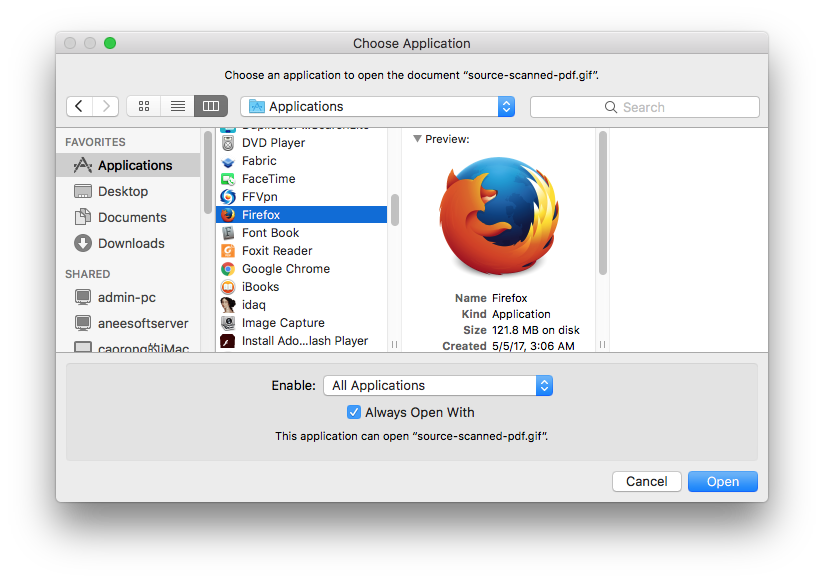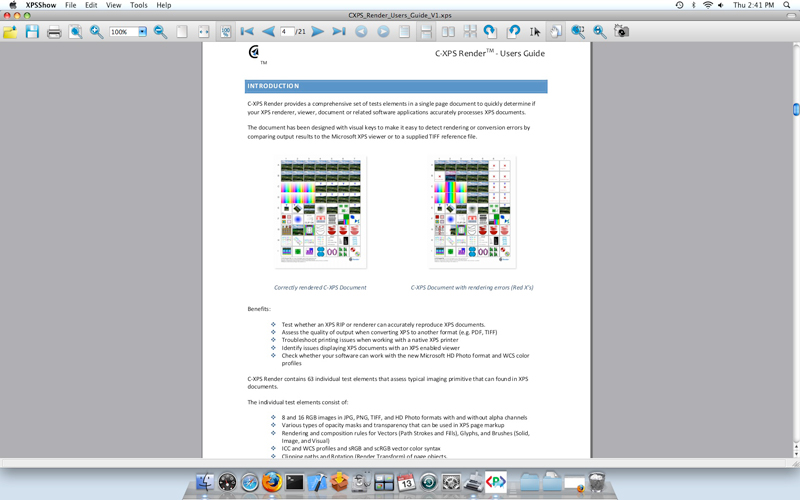2020. 2. 16. 23:34ㆍ카테고리 없음
Pagemark XpsViewer for Mac. Pagemark Xpsviewer is a viable option for working with XPS files on a Mac. While there is a free version of the program available for download, it only allows. Microsoft XPS Viewer Pagemark XpsViewer. XpsViewer NiXPS View Microsoft Word 2016; Linux. Pagemark XpsViewer Method 3: Use universal file viewer. In addition to the list of programs above, we recommend using Universal File Viewer. Download for Mac. Secure download. Related page layout files.imx: iMindMap Map File.pgs: PageStream Document.
MacTech is a registered trademark of Xplain Corporation. Xplain, 'The journal of Apple technology', Apple Expo, Explain It, MacDev, MacDev-1, THINK Reference, NetProfessional, Apple Expo, MacTech Central, MacTech Domains, MacNews, MacForge, and the MacTutorMan are trademarks or service marks of Xplain Corporation. Sprocket is a registered trademark of eSprocket Corporation. Other trademarks and copyrights appearing in this printing or software remain the property of their respective holders.
Not responsible for typographical errors.
Xps Viewer Online
From Wikipedia, the free encyclopedia Open XML Paper Specification (OpenXPS).oxps,.xps application/oxps, application/vnd.ms-xpsdocument Developed by, Initial release October 2006 First Edition / June 16, 2009 Type of format / Contained by Extended from, ECMA-388 The Open XML Paper Specification (also referred to as OpenXPS), is a for a and a fixed-document format originally developed by as XML Paper Specification ( XPS) that was later standardized by as international standard ECMA-388. It is an -based (more precisely -based) specification, based on a new print path and a document format that supports.
OpenXPS was standardized as an document format on June 16, 2009. Contents. Development of the XML Paper Specification In 2003 was chosen by to provide consultancy and proof of concept development services on XPS and worked with the Windows development teams on the specification and reference architecture for the new format. The XPS document format consists of structured XML markup that defines the layout of a document and the visual appearance of each page, along with rendering rules for distributing, archiving, rendering, processing and printing the documents. Notably, the markup language for XPS is a subset of, allowing it to incorporate elements in documents, using to mark up the WPF primitives. The elements used are described in terms of paths and other geometrical primitives. An XPS file is in fact a archive using the, containing the files which make up the document.
These include an XML markup file for each page, text, raster images, 2D, as well as the information. The contents of an XPS file can be examined simply by opening it in an application which supports ZIP files. Features XPS specifies a set of document layout functionality for paged, printable documents. It also has support for features such as, multiple-ink systems and print. XPS supports the technology for color conversion precision across devices and higher dynamic range.
It also includes a software which is downloadable separately. The print subsystem also has support for, simplifying color definition for images transmitted to printers supporting those colors. XPS also supports images natively for raster images. The XPS format used in the spool file represents advanced graphics effects such as 3D images, glow effects, and gradients as Windows Presentation Foundation primitives, which are processed by the printer drivers without, preventing rendering artifacts and reducing computational load.
Similarities with PDF and PostScript. Main article: Like 's format, XPS is a fixed-layout document format designed to preserve document fidelity, providing device-independent documents appearance. PDF is a database of objects, created from and also directly generated from many applications, whereas XPS is based on XML.
The filter pipeline architecture of XPS is also similar to the one used in printers supporting the PostScript page description language. PDF includes dynamic capabilities not supported by the XPS format. Viewing and creating XPS documents Because the printing architecture of Windows Vista uses XPS as the spooler format, it has native support for generating and reading XPS documents. XPS documents can be created by printing to the XPS. The XPS Viewer is installed by default in. The viewer is hosted within.

This Internet Explorer-hosted viewer and the XPS Document Writer are also available to users when they download the 3.0. The IE-hosted viewer supports.
Users who do not wish to view XPS documents in the browser can download the XPS Essentials Pack, which includes a standalone viewer and the XPS Document Writer. The XPS Essentials Pack also includes providers to enable the IPreview and IFilter capabilities used by, as well as shell handlers to enable thumbnail views and file properties for XPS documents in.
The XPS Essentials Pack is available for Windows XP, Windows Server 2003, and Windows Vista. Installing this pack enables operating systems prior to Windows Vista to use the XPS print processor, instead of the GDI-based WinPrint citation needed, which can produce better quality prints for printers that support XPS in hardware (directly consume the format). The format on these operating systems when printing to older, non-XPS-aware printers, however, remains unchanged.
Windows 7 contains a standalone version of the XPS viewer that supports digital signatures. Third-party support. Advertisements Software Name Publisher Platform Function Okular, the document viewer of the project, can display XPS documents.
Microsoft Windows STDU Viewer and display and organize XPS documents (as well as other electronic document formats). XPS Annotator can display, and XPS documents. In addition, it can convert XPS documents to common picture formats. Aspose.Words product family. Aspose.Words enables application developers to build applications that 'generate, modify, convert, render and print' XPS documents as well as some other formats. Aspose.Words is rather than an independent computer software; hence it cannot be used by consumers.
NiXPS View. Microsoft Windows. NiXPS View can display, search and print XPS documents. NiXPS Edit. Microsoft Windows. Mac OS X NiXPS Edit can view, edit, search, print and export XPS documents.
NiXPS SDK. Microsoft Windows. Mac OS X NiXPS SDK enables application developers to develop applications that can view, edit or export XPS documents. Pagemark XpsViewer. Linux Pagemark XpsViewer can display and organize XPS documents as well as converting them to common picture formats.
Pagemark XpsConvert. Microsoft Windows.
Mac OS. Linux Pagemark XpsConverter, a tool, can convert XPS documents to documents, as well as common picture formats. Pagemark XpsPlugin.
Pagemark XpsPlugin, an add-on for Mozilla Firefox and Safari web browsers, enables these web browsers to display XPS documents inside the browser window. This commercial product is still not available for purchase, but a demo version is available. PDFTron XPSConvert. Microsoft Windows. Mac OS X. Linux PDFTron XPSConvert, a tool, can convert XPS documents to format or common picture formats.
PDFTron PDF2XPS. Microsoft Windows.
Mac OS X. Linux PDFTron PDF2XPS, a tool, can convert PDF documents into XPS documents. Software Imaging XPSViewer Microsoft Windows Software Imaging XPSViewer, a alternative to Microsoft XPS Viewer, can view and print XPS documents. NDesk XPS NDesk XPS can view and convert XPS documents. Danet Studio Microsoft Windows Danet Studio can create, display, sign, convert and annotate XPS documents. It can split and merge existing XPS documents to create new XPS documents. Xps2pdf.org, an online tool, can convert XPS documents to format.
Hardware XPS has the support of printing companies such as, and and software and hardware companies such as, Pagemark Technology Inc., Informative Graphics Corp. (IGC), NiXPS NV,. Native XPS printers have been introduced by Konica Minolta, and Xerox. Devices that are Certified for Windows Vista level of certificate are required to have XPS drivers for printing since 1 June 2007.
Licensing In order to encourage wide use of the format, Microsoft has released XPS under a royalty-free patent license called the Community Promise for XPS, allowing users to create implementations of the specification that read, write and render XPS files as long as you include a notice within the source that technologies implemented may be encumbered by patents held by Microsoft. ^ Steve McGibbon (Microsoft) (2009-06-17). Retrieved 2009-12-10. Retrieved 2009-12-10. Retrieved 2009-12-10. ^ Foley, Mary Jo (2005-04-25). Retrieved 2009-12-10.
Retrieved 2009-12-10. Retrieved 2009-12-10.
Microsoft XML Paper Specification Essentials Pack. ^.
Xps Viewer For Mac
Retrieved 2009-12-10. Retrieved 2009-12-10. ^.
Retrieved 2009-12-10. Monckton, Paul.


Retrieved 2009-12-10. Retrieved 2009-12-10. Software Imaging. Retrieved 2009-12-10.
Pagemark Technology
Retrieved 2009-12-10. Retrieved 2009-12-10. Retrieved 2009-12-10., Microsoft.
Retrieved on June 8, 2006. Reimer, Jeremy (2007-07-01).
Retrieved 2009-12-10. Retrieved 2009-12-10. External links.
XPS software XPS viewer.